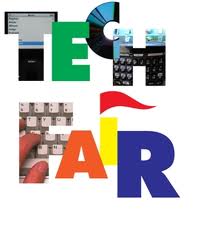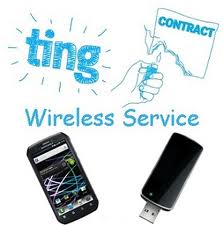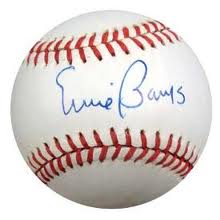 Perhaps, you’ve had the same experience as I have had in the last few years . . . Your your favorite non-profit organizations ask you to please take a moment out of your busy day to “VOTE” for them in some for-profit company’s social media contest so that they might win “big bucks”. If so, then maybe the following describes your experience, too.
Perhaps, you’ve had the same experience as I have had in the last few years . . . Your your favorite non-profit organizations ask you to please take a moment out of your busy day to “VOTE” for them in some for-profit company’s social media contest so that they might win “big bucks”. If so, then maybe the following describes your experience, too.
So, of course, I open a new browser window (possibly log into Facebook if that is where it is happening), migrate to the company’s voting page (e.g. the Pepsi Refresh Campaign), and start looking for instructions on how to help my favorite non-profit agency. In a flash, I’m being asked for personal information like my name, email address, waist size, hat size, and shoe size (yes, I am exaggerating, but am I really that far off???)
I close the browser and feel really good about doing something for my favorite charity. It didn’t even cost me a penny. Woo Hoo!!!
And then it happens . . .
The next day, the day after that, and the day after that . . . the charity keeps circling back to me with messages like:
- We’re still behind in the voting and need you to do it again, AGAIN, a-g-a-i-n!!!!!
- We need more help. Would you please post this opportunity on your Facebook page?
- We still need more help. Would you please be proactive and ask everyone in your social network to get out there and vote for us.
UGH . . . Stop the insanity!!!!!!!!!!
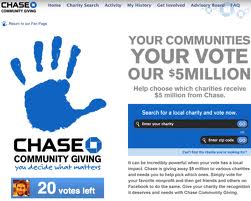 This has gotten so bad in the last few years that it isn’t uncommon for me to be asked at least once per month by someone to do something like this. It is the Pepsi Refresh Project . . . American Express Members’ Project . . . Chase Community Giving. Currently, it is Starbuck’s “Vote.Give.Grow.” campaign.
This has gotten so bad in the last few years that it isn’t uncommon for me to be asked at least once per month by someone to do something like this. It is the Pepsi Refresh Project . . . American Express Members’ Project . . . Chase Community Giving. Currently, it is Starbuck’s “Vote.Give.Grow.” campaign.
This insane kind of corporate philanthropy has me so insane that I find myself doing crazy things like stealing table tents.
Yesterday, I met a friend at Starbucks, which is when I saw a table tent advertising the Vote.Give.Grow. campaign. I subtly looked about, grabbed the table tent, folded it in half and stuck it in my jacket. Why? I dunno . . . it was instinct, but I can tell you that I felt like I was striking a blow against “The Man” and trying to “Stop the insanity” in a very small way.
I told you . . . embarrassing behavior on my part! However, I think it speaks to something larger, which is why I’m blogging about it this morning.
A year ago, Forbes magazine wrote a story titled: “The Democratization Of Corporate Philanthropy“. In that article, they talked about the consequences of participating in a campaign like: “voter burnout and diverting resources” . However, I think this is just the tip of the iceberg.
Engaging your donor base in such a way does nothing to advance your mission or message. All you are doing is advancing the corporation’s marketing interests because they now have your donor’s personal information.
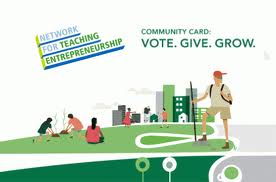 I also suspect that asking your donors to do something they might find annoying or offensive is counterintuitive to good donor stewardship. Rather than making your donors feel good about their investment in your mission and showing them the ROI around their contribution, they see you doing non-mission related work and advancing a for-profit organization’s agenda.
I also suspect that asking your donors to do something they might find annoying or offensive is counterintuitive to good donor stewardship. Rather than making your donors feel good about their investment in your mission and showing them the ROI around their contribution, they see you doing non-mission related work and advancing a for-profit organization’s agenda.
Hey donors! I have a better idea. Let’s focus on donating our own money and stop trying to spend other people’s money. Sure, you probably have a lot less than millions of dollars to giveaway, but I am fairly sure you’ll feel better about yourself if you invest the same amount of time in researching your charity of choice and writing them a personal check.
Perhaps, fundraising professionals would be better served by investing their time in helping donors find a sense of “self actualization” rather than helping corporations advance their marketing objectives and build their profit margins.
Am I off base on this? Is anyone else as annoyed as I am about these kind of voting programs attached to corporate philanthropy? Perhaps, we should organize a social media campaign aimed at stealing table tents that advertise these kinds of corporate philanthropy voting programs?!?! If you’re equally agitated about this subject, please scroll down and use the comment box to share your experiences and feelings. Additionally, please weigh-in on what you think other consequences might be for non-profits who participate in these kind of programs.
Here’s to your health!
Erik Anderson
Founder & President, The Healthy Non-Profit LLC
www.thehealthynonprofit.com
erik@thehealthynonprofit.com
http://twitter.com/#!/eanderson847
http://www.facebook.com/eanderson847
http://www.linkedin.com/in/erikanderson847



